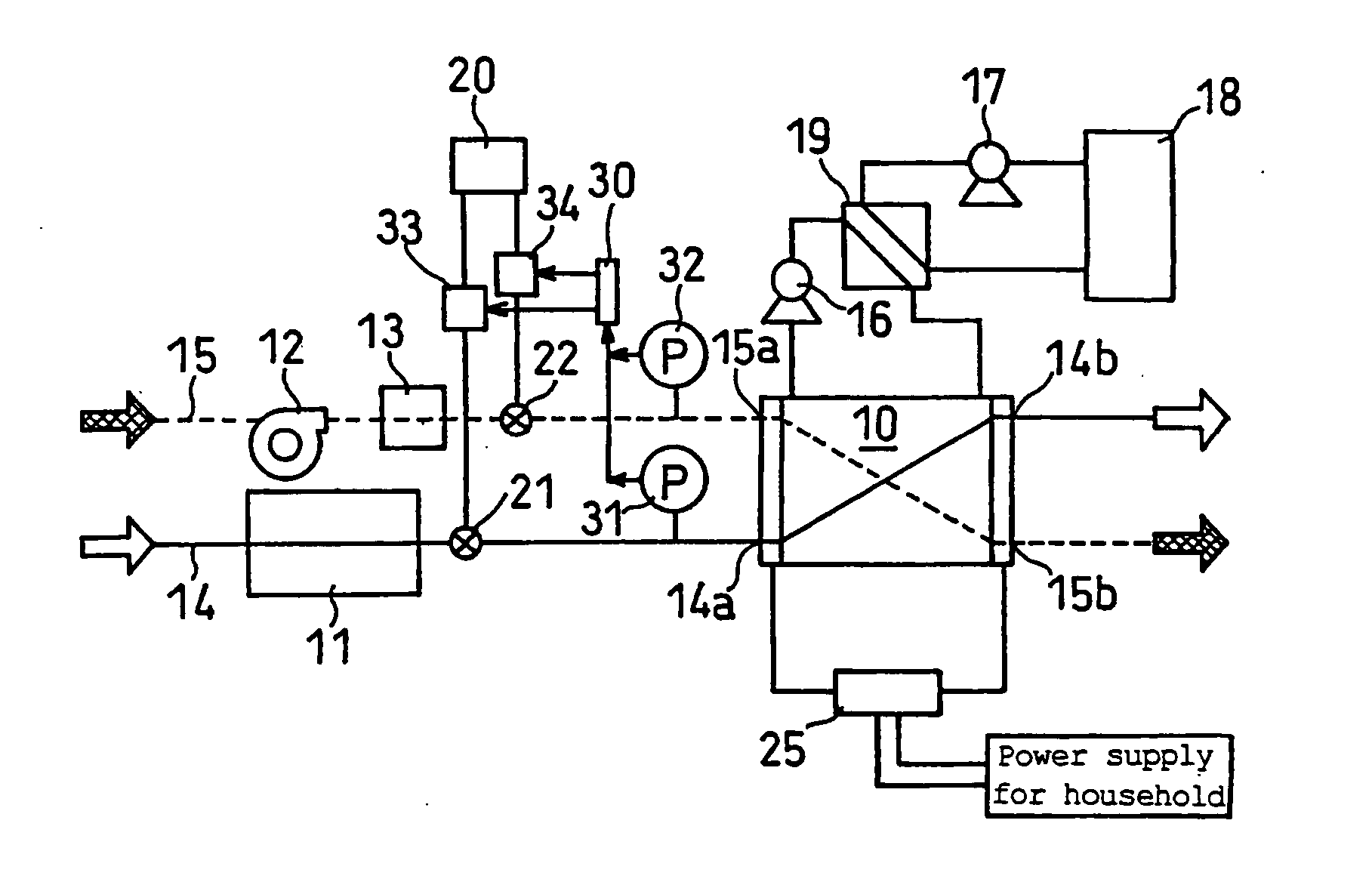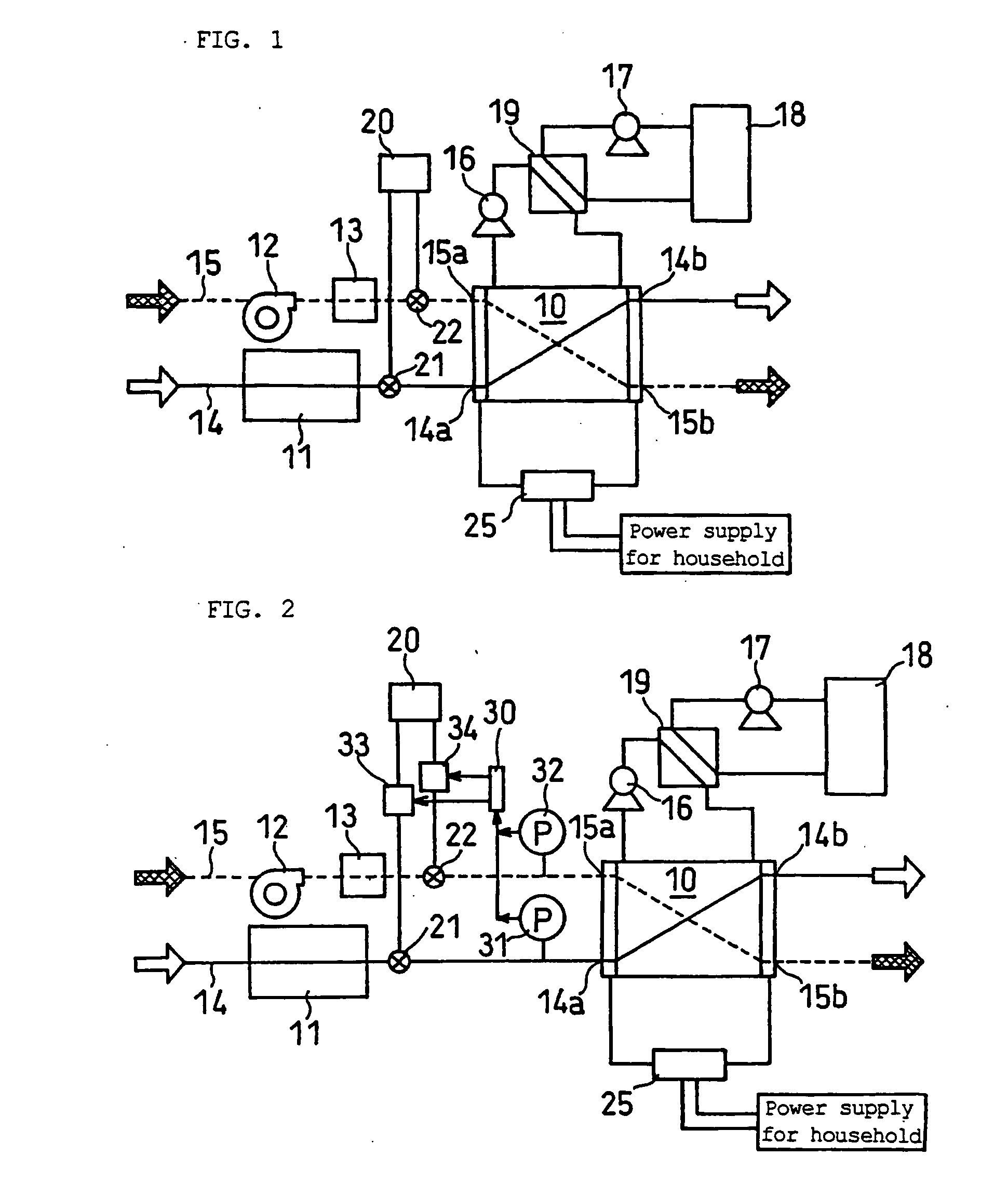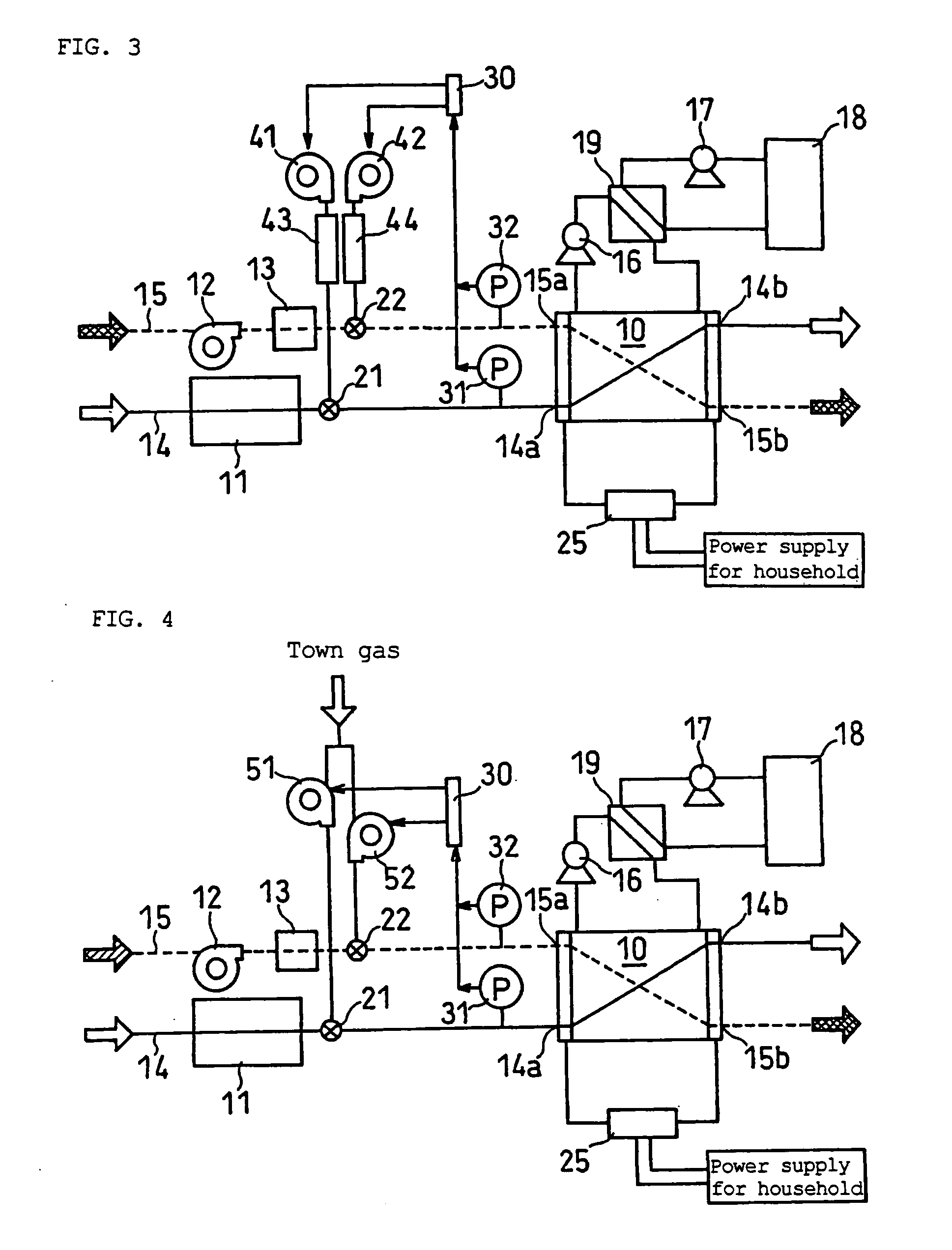Fuel Cell System
a fuel cell and system technology, applied in the direction of fuel cells, solid electrolyte fuel cells, electrical equipment, etc., can solve the problems of water vapor in the anode and cathode, the need to remove hydrogen gas from the fuel cell during shut-down, and the need to reduce the catalytic ability of the electrode, so as to achieve high reliability and suppress the degradation of the strength of the solid polymer membrane
- Summary
- Abstract
- Description
- Claims
- Application Information
AI Technical Summary
Benefits of technology
Problems solved by technology
Method used
Image
Examples
embodiment 1
[0036]FIG. 2 is a diagram showing the structure of a fuel cell system according to Embodiment 1 of the present invention.
[0037] The fuel cell system of Embodiment 1 includes a solid polymer type fuel cell 10 that generates electric power using a fuel gas and an oxidant gas, hydrogen supply means 11 for producing a hydrogen-rich gas by steam-reforming of a raw material such as natural gas and supplying it to the fuel cell 10, air supply means 12 for taking in outside air as an oxidant gas, and a humidifier 13 for humidifying the air as appropriate. It also includes a pump 16 for circulating cooling water to collect the heat generated during the power generation of the fuel cell 10, a heat exchanger 19 for collecting / storing the thermal energy collected from the cooling water, a hot water reservoir 18, a circulation pump 17 for circulating the water in the hot water reservoir 18 through the heat exchanger 19, and an inverter 25 for converting the direct current generated by the fuel ...
embodiment 2
[0052]FIG. 3 is a diagram showing the structure of a fuel cell system according to Embodiment 2 of the present invention.
[0053] The fuel cell system of Embodiment 2 has blowers 41 and 42, instead of the inert gas cylinder 20, in the conventional system as described in Embodiment 1. The air introduced into the system by the blowers 41 and 42 from the outside is passed through combustors 43 and 44, so that oxygen in the air is consumed and nitrogen gas serving as the inert gas is produced. This gas is supplied to the fuel cell as the purge gas. Further, the system is equipped with the manometers 31 and 32 for measuring the pressure in the fuel gas flow path 14 on the inlet 14a side and the pressure in the air flow path 15 on the inlet 15a side, and the controller 30 for storing the pressures measured by the manometers 31 and 32 and controlling the outputs of the blowers 41 and 42 based on the measured values.
[0054] The purge sequence of Embodiment 2 for shut-down is described below....
embodiment 3
[0066]FIG. 4 is a diagram showing the structure of a fuel cell system according to Embodiment 3 of the present invention.
[0067] The fuel cell system of Embodiment 3 has booster pumps 51 and 52, instead of the inert gas cylinder 20, in the conventional system as described in Embodiment 1. The town gas introduced into the system by the booster pumps 51 and 52 from the outside is supplied to the fuel cell as the inert gas. Further, the system is equipped with the manometers 31 and 32 for measuring the pressure in the fuel gas flow path 14 on the inlet 14a side and the pressure in the air flow path 15 on the inlet 15a side, and the controller 30 for storing the pressures measured by the manometers 31 and 32 and controlling the outputs of the booster pumps 51 and 52 based on the measured values.
[0068] The purge sequence of Embodiment 3 for shut-down is described below.
[0069] When the demand for power from the external circuit disappears and a stop signal is sent to the fuel cell syste...
PUM
| Property | Measurement | Unit |
|---|---|---|
| temperature | aaaaa | aaaaa |
| current density | aaaaa | aaaaa |
| shut-down time | aaaaa | aaaaa |
Abstract
Description
Claims
Application Information
 Login to View More
Login to View More - R&D
- Intellectual Property
- Life Sciences
- Materials
- Tech Scout
- Unparalleled Data Quality
- Higher Quality Content
- 60% Fewer Hallucinations
Browse by: Latest US Patents, China's latest patents, Technical Efficacy Thesaurus, Application Domain, Technology Topic, Popular Technical Reports.
© 2025 PatSnap. All rights reserved.Legal|Privacy policy|Modern Slavery Act Transparency Statement|Sitemap|About US| Contact US: help@patsnap.com



